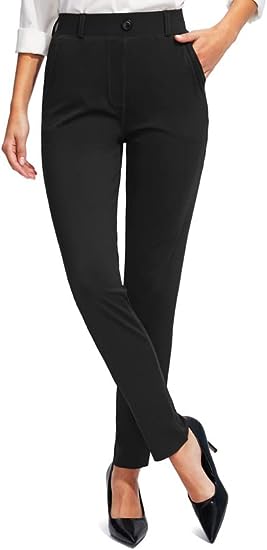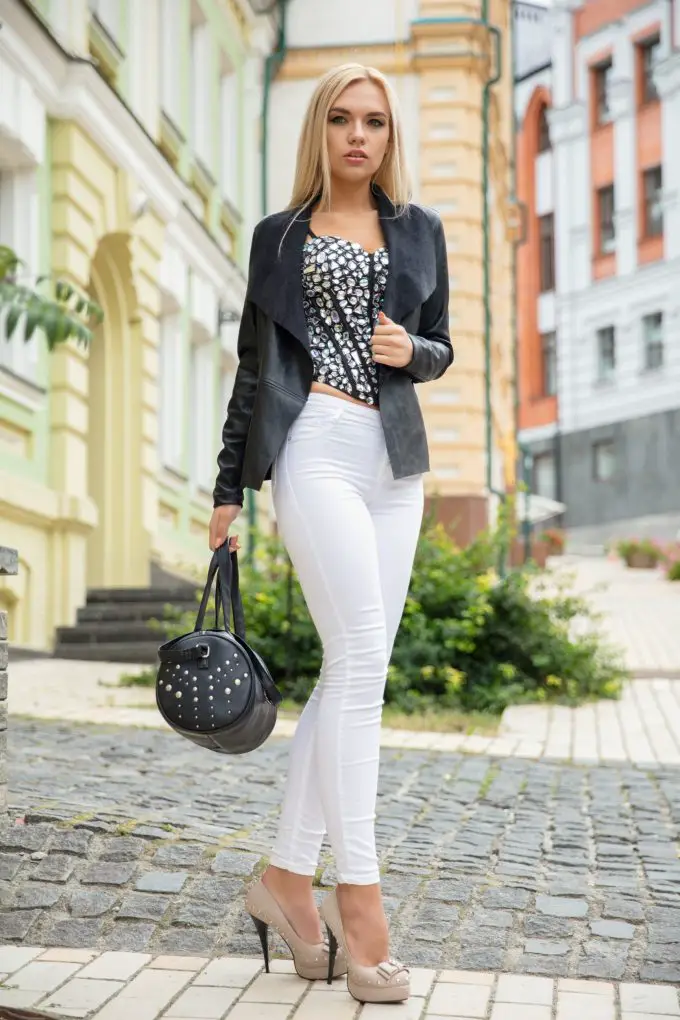Can You Wear Leggings to an Interview: A Guide to Interview Outfits
No, wearing leggings to a job interview is not recommended, as they are generally considered too casual for a professional setting. However, leggings are often associated with leisure or athletic activities and may not convey the formality and respect expected in a job interview.


Instead, opting for more formal attire such as dress pants, a skirt, or a dress is best. Women may consider pairing these with a blouse or a professional-looking top, and men may opt for a dress shirt or a suit.
When in doubt about the dress code for an interview with a company or industry, it’s wise to dress more conservatively to avoid confusion. It’s preferable to be slightly overdressed than underdressed, as it indicates that you’re serious about the interview and respectful of the company’s culture and standards.
Dress Code Basics


When dressing for a job interview, making a good first impression is important. One of the key factors that can influence the interviewer’s perception of you is your attire. It’s crucial to dress appropriately for the position and the company culture.
Company Culture
When attending an interview, the company culture should be considered when deciding what to wear. If the company has a formal dress code, it is important to dress appropriately. Conversely, if the company has a casual dress code, it is acceptable to dress less formally. Researching the company’s culture before the interview can help determine what to wear.
For instance, if the company is a startup, they likely have a more relaxed dress code. In contrast, if the company is a law firm, they may expect you to wear a suit or a formal dress. When in doubt, it’s always better to overdress than to underdress.
Industry Standards
Based on experience, industry standards also play a vital role in determining what to wear to an interview. For example, if you’re interviewing for a job in the fashion industry, it’s essential to dress stylishly and fashionably. In contrast, if you’re interviewing for a job in the healthcare industry, it’s crucial to dress professionally and conservatively.
Researching the industry standards before the interview is essential to ensure you’re dressed appropriately. You can also look at the company’s website or social media pages to understand what employees wear.
Interview Attire


When dressing for a job interview, making a good impression is important. How you present yourself can convey a lot about your professionalism, attention to detail, and general suitability for the job. It’s widely known that first impressions count. Hence it’s crucial to dress appropriately for the occasion.
Professionalism
Professionalism is one of the most crucial things to remember when choosing an interview outfit. The job interview is formal, and you want to ensure that your attire reflects that. It’s best to err on the side of caution and choose conservative, business-like clothing. This may include a suit, dress, skirt, or blouse combination.
Paying attention to the details is crucial. Make sure your clothes are clean and ironed and your shoes are polished. It’s best to avoid wearing anything too revealing or flashy, as it may cause distractions and give off the wrong impression.
First Impressions
As mentioned earlier, first impressions are crucial for job interviews. A neat look can give a good impression, according to Minnesota State CAREERwise. Your attire can greatly influence how the interviewer views you. For example, clothing that is too casual or inappropriate can create a negative impression, while dressing too formally can make you seem out of touch with the company culture.
Researching the company before the interview to understand its dress code is a good idea. It’s always better to dress up rather than down if in doubt. A good rule of thumb is to dress one level above what you would wear on the job.
Leggings in the Workplace
Leggings have become a popular fashion item in recent years, but there are some considerations to remember when it comes to the workplace. While leggings can be comfortable and versatile, they may only sometimes be appropriate for certain work environments, including job interviews. Here are some things to consider:
Acceptable Attire
Regarding workplace attire, it’s important to dress appropriately for the job and the company culture. In some workplaces, leggings may be acceptable as part of a casual dress code. For example, leggings paired with a tunic top and boots may be perfectly acceptable in a creative or tech-focused workplace. However, leggings may not be considered professional attire in a more traditional workplace, such as a law firm or financial institution.
When in doubt, it’s always best to err on the side of caution and choose more conservative attire for the workplace. Dress pants, pencil skirts, knee-length dresses, blazers, neutral or light-colored blouses, sweaters, cardigans, tights, and suits are acceptable for interview attire. Closed-toed heels, flats, and short boots are appropriate for dress shoes.
Appropriate Occasions
While leggings may be acceptable in some workplaces, there are certain occasions where they may not be appropriate. For example, if you’re meeting with clients or attending a business conference, choosing more formal attire is best. However, leggings may also not be appropriate for certain job functions, such as teaching or healthcare, where a more professional appearance is expected.
It’s also important to consider the company’s dress code when deciding whether or not to wear leggings to work. Leggings may be acceptable if the dress code is business casual or casual. However, if the dress code is more formal, avoiding leggings is best.
Alternatives to Leggings


Pants
For those who prefer pants, several options are appropriate for an interview. Dress pants are a classic choice and can be paired with a blouse or button-down shirt. Khaki pants are also a good option, especially for a casual interview. Be sure to choose pants that fit well and are not too tight or loose. Avoid pants with bold patterns or logos.
Skirts/Dresses
Skirts and dresses can be a great alternative to pants. A knee-length skirt or dress is a safe choice for most interviews. Neutral colors like black, navy, or gray are best and avoid anything too bright or flashy. Pair with a blouse or sweater and closed-toe shoes.
Accessories
Accessories can also help complete an interview outfit. A blazer or cardigan can add a professional touch to any outfit. Scarves or statement jewelry can add a pop of color or personality, but be sure to keep it tasteful and not too distracting. A simple, classic handbag or briefcase can also complete the look.
